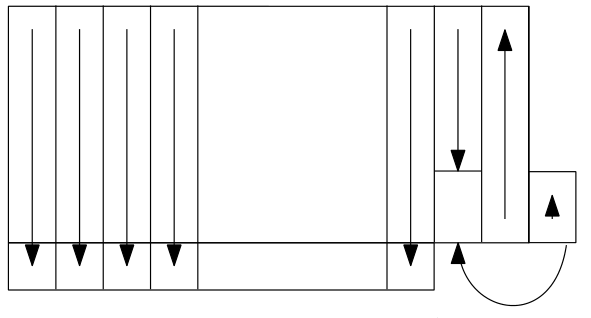Problem description:
Given a non-empty string s and an integer k, rearrange the string such that the same characters are at least distance k from each other.
All input strings are given in lowercase letters. If it is not possible to rearrange the string, return an empty string "".
Example 1:
Input: s = "aabbcc", k = 3
Output: "abcabc"
Explanation:
The same letters are at least distance 3 from each other.
Example 2:
Input: s = "aaabc", k = 3
Output: ""
Explanation:
It is not possible to rearrange the string.
Example 3:
Input: s = "aaadbbcc", k = 2
Output: "bacabcd"
Explanation:
Another possible answer is: "abcabcda"
The same letters are at least distance 2 from each other.
(Update: There is a much simpler construction, which I posted here. I'll update the article when I have time.)
After I solved this problem, It's funny to see that people used all kinds of complicated data structures for this problem, e.g. heap (priority queue), hash map, etc.
In fact, there is an extremely simple algorithm that doesn't need any of them and runs in O(n) time by construction.
Let's look at the problem. We must separate the same characters by distance at least k, so let's simply cut it into n/k pieces, each has length k. The last one must have length n%k, and it looks like this:
The most problematic character is, of course, the one that shows up the most. So first we count the frequency of the characters, and sort in descending order (sorting has complexity O(n lg n), but since the number of characters in a string are upper-bounded by a constant, it's considered O(1) here).
We simply put the first character in the front of each substring. If the frequency is more than the number of substrings, then it's impossible.
Next, we simply put the second character in the next empty place, continuing from where the last character was put. E.g, if we have 6 of 'x' and 5 of 'y', and 8 substrings, then after filling in the first two characters, the substrings are
xy
xy
x
x
x
y
y
It would violate the condition if the last 'y' reaches or goes beyond the substring above the first 'y' - but it won't happen, since the frequency of the second character must be equal or smaller than the first one, so if that happens, then it must happen to the first character which is before it. Since we must check if the frequency of the first character is more than the number of substrings, we would've already noticed that it's impossible. And if they all have the same length n/k(+1), then 'y' would just fill in all the substrings from the first to the last as well, so there won't be any problems either!
Now we can fill in the characters from top to bottom, when it's full we move to the right. If n%k==0, that's all we need to do!It would be a little more complicated if n%k!=0. Let's see what happens.










